Sulphadimidine Bolus 5g for Horses: Broad-Spectrum Antibiotic Treatment Explained
In equine veterinary medicine, the rapid and effective treatment of bacterial infections is crucial for maintaining health, performance, and recovery. Among the widely used sulfonamide antibiotics, Sulphadimidine Bolus 5g is a dependable and cost-effective choice for treating a broad spectrum of bacterial diseases in horses. Whether for respiratory infections, gastrointestinal disturbances, or systemic septicemia, this bolus provides targeted action with a long-standing reputation for efficacy and safety.
What Is Sulphadimidine Bolus 5g for Horses?
Sulphadimidine (also known as sulfamethazine) is a synthetic antimicrobial agent belonging to the sulfonamide class.
Key Properties:
- Broad-spectrum antibacterial activity
- Bacteriostatic (inhibits bacterial growth)
- Rapid absorption and systemic distribution
- Effective against many Gram-positive and Gram-negative organisms
- Long half-life allows for sustained action
The 5g bolus form is designed for oral administration in horses, making it easier to deliver accurate dosages with minimal stress to the animal.
Indications of Sulphadimidine Bolus 5g in Horses
1. Respiratory Tract Infections
Sulphadimidine is commonly indicated for:
- Bacterial pneumonia
- Strangles (caused by Streptococcus equi)
- Bacterial bronchitis and tracheitis
Its activity against streptococci and other respiratory pathogens makes it a go-to treatment for horses showing signs of coughing, nasal discharge, and labored breathing.
2. Gastrointestinal Infections
Sulphadimidine Bolus 5g is effective in treating:
- Bacterial enteritis
- Diarrhea due to E. coli or Salmonella spp.
- Gastrointestinal toxemia associated with bacterial overgrowth
It reduces bacterial load and inflammation in the gut, helping restore digestive balance and preventing secondary complications.
3. Urinary Tract Infections (UTIs)
Sulphadimidine targets:
- Cystitis
- Urethritis
- Pyelonephritis
Its renal excretion ensures therapeutic levels in the urinary tract.
4. Septicemia and Systemic Infections
Sulphadimidine is useful in:
- Septicemia caused by susceptible organisms
- Complicated infections with systemic symptoms
- Post-surgical bacterial infections
Early intervention can prevent organ failure and reduce mortality.
5. Post-Surgical Prophylaxis
Veterinarians often administer Sulphadimidine Bolus post-operatively to:
- Prevent wound infection
- Reduce systemic inflammatory response
- Support healing in procedures like castration, dental extractions, or laceration repairs
6. Reproductive Infections
- Metritis
- Endometritis
- Vaginitis
Sulphadimidine helps control bacterial contamination in the reproductive tract, often used alongside uterine flushing and supportive therapy.
Dosing Regimen and Administration Practices in Horses
The bolus is formulated for oral use and should always be administered under the supervision of a licensed veterinarian.
Recommended Dosage
Standard dosage for horses:
- Initial (loading) dose: 100 mg/kg body weight
- Maintenance dose: 50 mg/kg every 24 hours
- Treatment duration: Typically 3–5 days depending on severity and response
Dosage Chart (Based on Horse Weight)
| Horse Weight (kg) | Initial Dose (mg) | Maintenance Dose (mg) | Bolus (5g = 5000 mg) Required |
| 250 kg | 25,000 mg | 12,500 mg | 5 boluses → then 2.5 daily |
| 400 kg | 40,000 mg | 20,000 mg | 8 boluses → then 4 daily |
| 500 kg | 50,000 mg | 25,000 mg | 10 boluses → then 5 daily |
| 600 kg | 60,000 mg | 30,000 mg | 12 boluses → then 6 daily |
Always adjust dosage to the exact body weight and follow veterinary instructions.
Frequency of Administration
- Treatment typically lasts 3 to 5 days but may be extended with veterinary oversight.
Method of Administration
- Administer the bolus orally, directly into the horse’s mouth using a balling gun or by hand.
- Ensure the horse swallows the full dose.
- Can be given with a small amount of feed to encourage swallowing if approved by the veterinarian.
- Do not crush or split unless specifically instructed, as this may affect drug absorption.
Tips for Successful Administration
- Handle horses calmly to avoid stress during dosing.
- Wear gloves when handling the bolus.
- Record each dose administered to ensure compliance with the treatment plan.
Important Considerations
- Avoid missing doses; maintain a consistent dosing schedule.
- If a dose is missed, consult your veterinarian before doubling the next dose.
- Monitor the horse for any signs of adverse reactions (e.g., diarrhea, reduced appetite, urticaria).
Duration of Treatment
- Mild to moderate infections: 3 days
- Severe infections or systemic disease: 5 to 7 days
- Continue treatment for 48 hours after symptoms resolve, or as directed by your vet.
Sulphadimidine 5g for Horses: Cautions and Complications
Sulphadimidine Bolus 5g is a widely used and effective sulfonamide antibiotic for horses, offering broad-spectrum activity against many bacterial pathogens. However, as with all veterinary medications, proper usage and awareness of potential risks are essential to ensure the horse’s safety and well-being.
General Safety Guidelines
- Always use under veterinary supervision.
- Administer the correct weight-based dose to avoid toxicity.
- Limit use to recommended treatment durations to avoid resistance or adverse effects.
Precautions When Using Sulphadimidine Bolus in Horses
- Hydration is critical:
Encourage fluid intake during treatment. - Use cautiously in liver or kidney-impaired horses:
Reduced organ function can affect drug clearance, increasing the risk of toxicity. - Monitor for hypersensitivity:
Sulfonamides may cause allergic reactions in some horses, including skin eruptions, fever, or behavioral changes. - Do not exceed recommended duration:
Prolonged use may increase the risk of blood disorders or secondary infections due to disruption of normal flora. - Drug interactions:
Avoid concurrent use with:- Methenamine (risk of crystalluria)
- Warfarin or other anticoagulants (enhanced effects)
- Other sulfonamides (increased toxicity)
- Pregnancy and lactation:
Use in pregnant or lactating mares should be approached cautiously and only with veterinary approval.
Contraindications
Sulphadimidine Bolus 5g should not be used in the following cases:
- Known allergy to sulfonamides
- Horses with severe liver or kidney disease
- Animals with hematological disorders (e.g., anemia, leukopenia)
- Horses receiving nephrotoxic drugs concurrently
Potential Side Effects
While many horses tolerate Sulphadimidine well, the following side effects may occur, especially with prolonged or high-dose use:
Mild to Moderate Effects:
- Decreased appetite
- Mild diarrhea
- Lethargy
- Skin rash or hives (urticaria
Serious or Rare Effects:
- Crystalluria or blood in urine
- Fever and hypersensitivity reactions
- Bone marrow suppression (anemia, leukopenia)
- Jaundice (liver toxicity)
- Renal tubular necrosis in dehydrated animals
When to Stop Treatment and Contact a Vet
Stop administration and contact your veterinarian immediately if you notice any of the following signs:
- Signs of allergic reaction (swelling, itching, difficulty breathing)
- Blood in urine or unusual urination
- Persistent loss of appetite
- Yellowing of gums or eyes
- Sudden behavioral changes or colic symptoms
Benefits of Sulphadimidine Bolus 5g in Horses
Broad-spectrum action against Gram-positive and Gram-negative bacteria
Cost-effective treatment option
Convenient oral dosing
Rapid onset and long-lasting action
Effective as both treatment and prophylaxis
Compatible with many supportive therapies
Scientific Validation and Therapeutic Insights for Sulphadimidine Bolus 5g in Horses
Sulphadimidine, a sulfonamide antibiotic, has been extensively studied for its antimicrobial effectiveness in both large and small animals, including horses. Its broad-spectrum bacteriostatic action against many Gram-positive and Gram-negative organisms makes it a critical part of veterinary antimicrobial therapy.
1. Antimicrobial Efficacy in Equine Infections
Study Source: Journal of Veterinary Pharmacology and Therapeutics
Conclusion: The bolus form is effective for treating infections when used early and at appropriate dosages.
2. Pharmacokinetics in Equines
Study Source: Equine Veterinary Journal
Key Findings:
- Rapid oral absorption after bolus administration
- Peak plasma levels within 1–2 hours
- Sustained bacteriostatic concentration for up to 24 hours
- Excreted primarily through the kidneys, making it ideal for urinary tract infections
Conclusion: Supports once-daily dosing for most cases with predictable absorption and clearance.
3. Clinical Use in Diarrhea and GI Infections
Sulphadimidine was administered in foals and adult horses with diarrhea due to E. coli and Salmonella.
Outcome: Horses showed faster resolution of diarrhea, improved hydration, and reduced inflammatory markers when treated with Sulphadimidine.
Conclusion: A valuable antibiotic in equine enteric disease management.
4. Use in Respiratory Tract Infections (Strangles, Pneumonia)
Study Source: Veterinary Microbiology Journal
This study showed that Sulphadimidine, when used early in horses with clinical signs of upper respiratory infections, helped shorten disease duration and reduced bacterial shedding.
Conclusion: Effective at controlling respiratory pathogens when used at the first sign of illness.
5. Post-Surgical Infection Control
Case Series: In horses undergoing castration and wound repair, Sulphadimidine Bolus was given prophylactically.
Result: Fewer cases of secondary infection and reduced need for extended hospital stays.
Conclusion: Offers a cost-effective and efficient means of post-surgical infection control.
Veterinary Clinical Experience
Veterinarians widely support the use of Sulphadimidine Bolus 5g due to:
- Its broad antibacterial coverage
- Cost-effectiveness for large animal treatment
- Ease of oral administration
- Documented safety and tolerability in equines
Conclusion
Sulphadimidine Bolus 5g for horses is a time-tested, broad-spectrum sulfonamide antibiotic that provides effective relief from a wide variety of bacterial infections, including those affecting the respiratory, digestive, urinary, and reproductive systems. Its ease of administration, proven efficacy, and affordability make it a staple in equine veterinary practice.When used responsibly under professional supervision, Sulphadimidine Bolus 5g can drastically improve recovery times, reduce infection-related complications, and support the long-term health and performance of horses. Its broad-spectrum activity against a wide range of bacterial pathogens—particularly those affecting the respiratory, gastrointestinal, urinary, and reproductive systems—makes it an essential tool for both treatment and prophylaxis in horses.







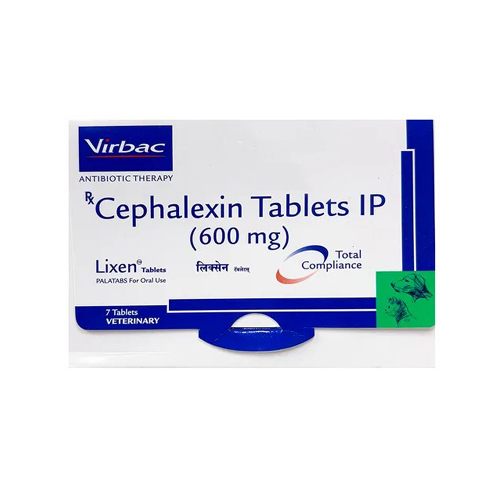
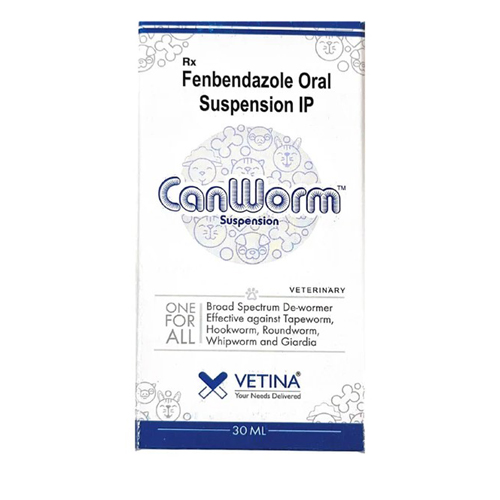



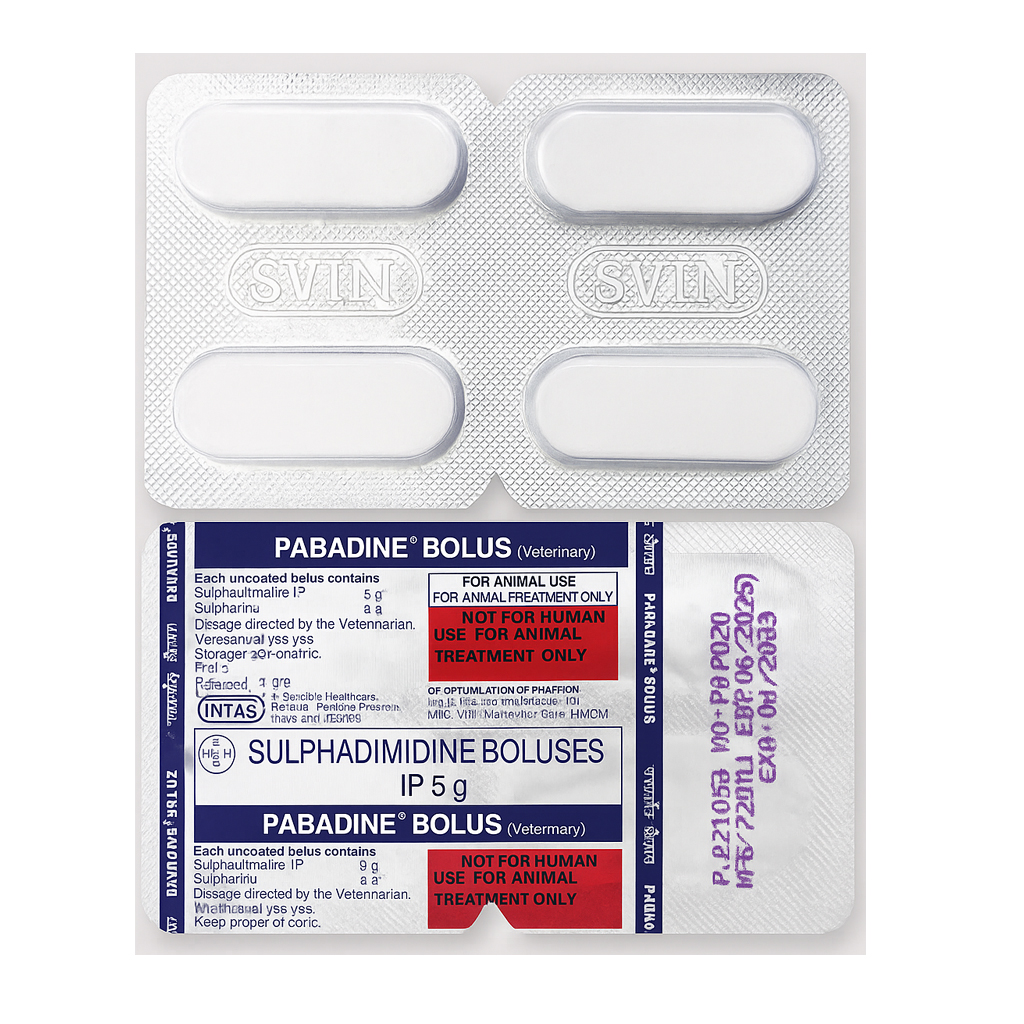
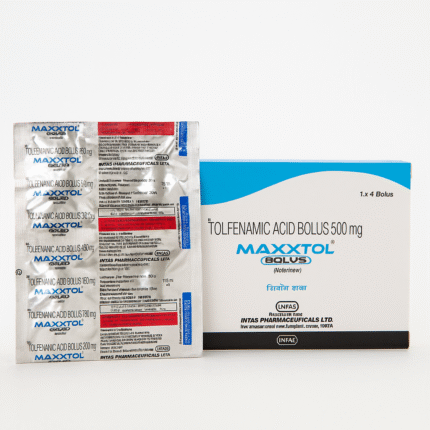
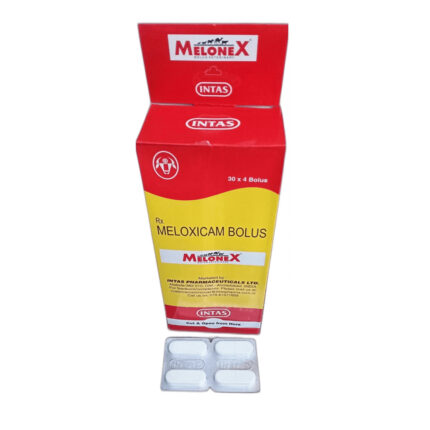
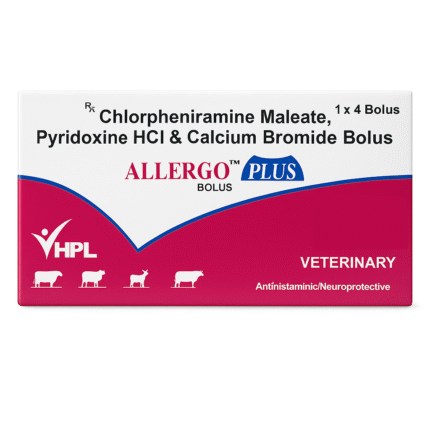

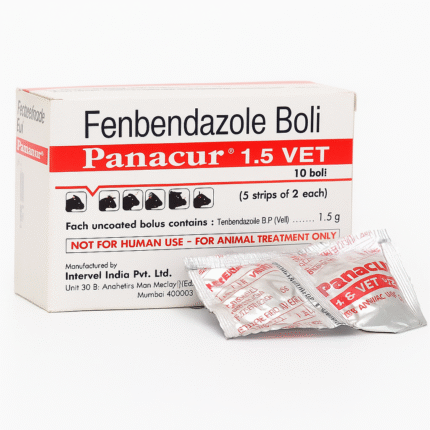
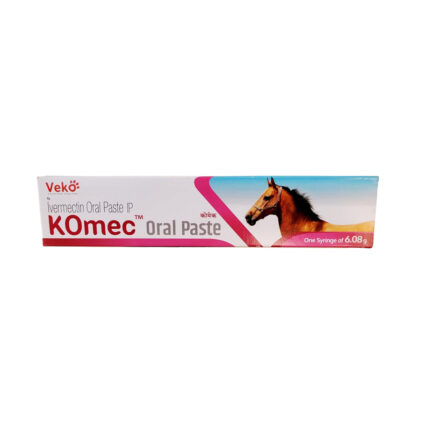
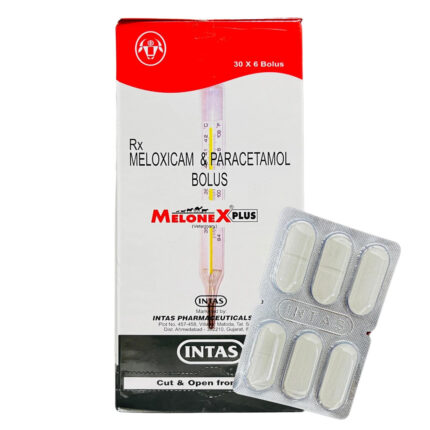
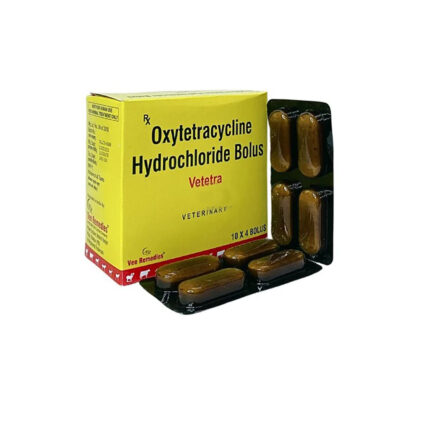

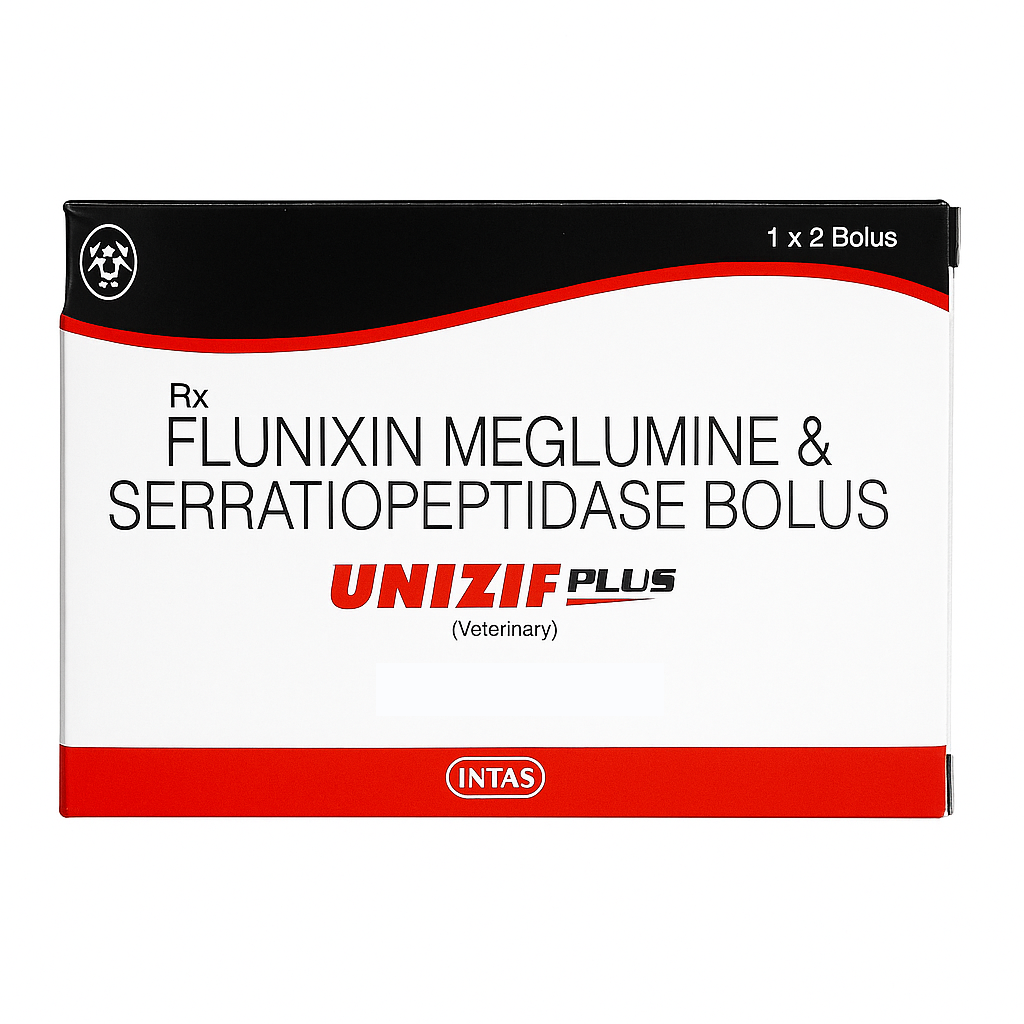
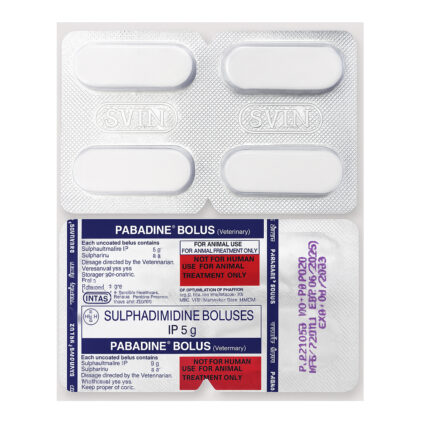
Reviews
There are no reviews yet.